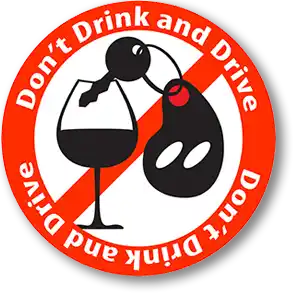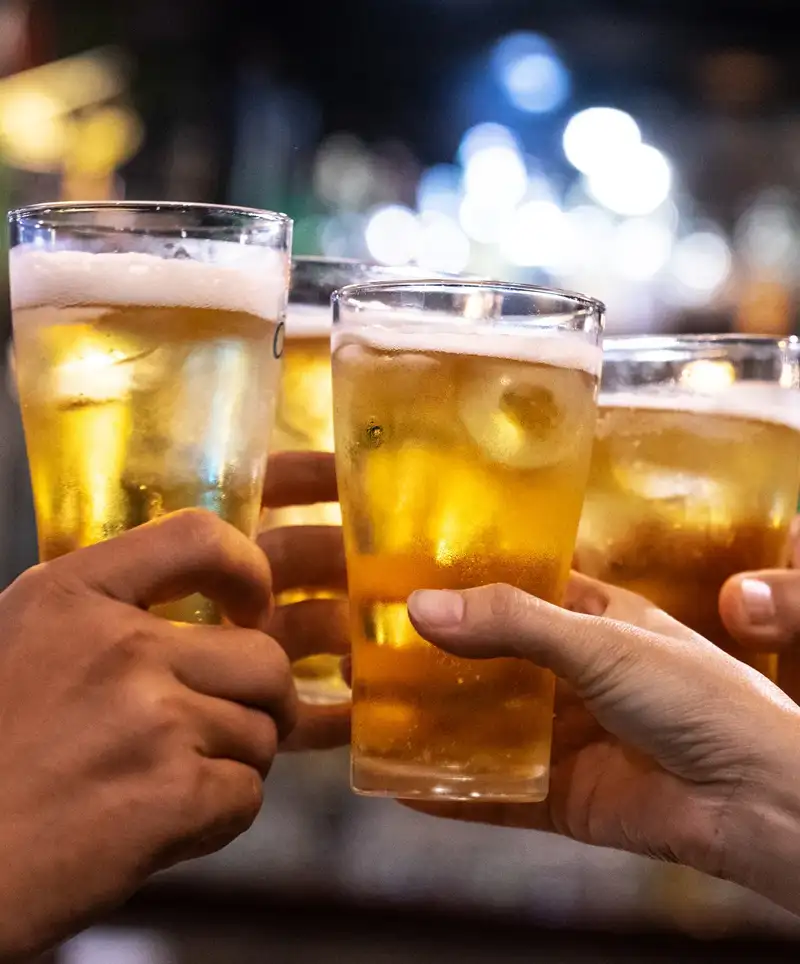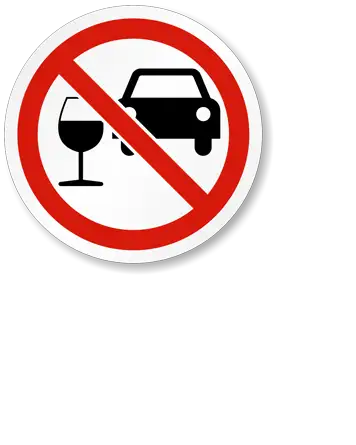A Wake-Up Call in Numbers
As the winter chill sets in and December's festivities begin, National Impaired Driving Prevention Month casts a sobering shadow with some jarring statistics. In 2021, the United States faced a grim reality: a 14% surge in fatal accidents involving drunk drivers compared to the previous year, leading to 13,384 lost lives. This means that nearly every 39 minutes, a family, a community, a circle of friends is shattered by a preventable tragedy. This alarming number accounted for about 31% of all traffic fatalities that year, highlighting a distressing trend in impaired driving.
This month isn't just a token acknowledgment in the calendar; it's a stark reminder of the consequences of driving under the influence. Amid the holiday cheer and New Year's toasts, it is a critical call to action for each of us to reconsider our choices and champion the cause of safe driving. As communities across the country string up lights and plan celebrations, National Impaired Driving Prevention Month urges us also to illuminate the dark reality of impaired driving and strive for a safer, more responsible end to the year.
Pandemic Aftermath
The COVID-19 pandemic brought unprecedented changes to our daily lives, and one of its less-discussed ripple effects was a significant increase in alcohol consumption, especially among adults over 30. During the 2020 lockdowns, isolated at home and grappling with a myriad of stressors - from health fears to economic uncertainties - many turned to alcohol as a coping mechanism. This shift led to an unexpected and troubling consequence: a rise in impaired driving incidents as soon as restrictions began to lift.
As 2021 ushered in a semblance of normality, with businesses reopening and social activities resuming, the pattern of increased alcohol consumption didn't recede as expected. Instead, the pent-up desire for socialization and the continuation of stress-related drinking behaviors converged, contributing to the continued rise in drunk driving incidents. The reopening of bars and restaurants also played a role, as people, now more accustomed to higher levels of alcohol consumption, found themselves with more opportunities to drink outside their homes and then drive.
Moreover, the pandemic's impact on mental health cannot be overlooked. The lingering effects of prolonged stress, anxiety, and depression may have led to more people using alcohol as a self-medication tool, inadvertently increasing the risk of impaired driving. The normalization of increased alcohol use during lockdowns potentially lowered the guard of many against the dangers of drinking and driving.
This adjustment phase to a 'new normal' highlighted a critical need for a renewed focus on impaired driving prevention. It became evident that the battle against drunk driving required not only legal enforcement but also a deeper understanding of the societal and psychological factors contributing to this dangerous behavior.
Geographic Disparities
When examining impaired driving statistics across the United States, a striking pattern of geographical disparities emerges. Take Montana, for instance, where nearly 45% of traffic fatalities in 2020 involved drunk drivers. This high percentage starkly contrasts with states like Mississippi, where the rate was under 25%. But what accounts for such significant differences?
 Firstly, rural versus urban settings play a crucial role. In Montana, long distances between towns and cities in its predominantly rural landscape make it difficult for residents to return home without driving. This, coupled with a limited availability of public transportation options, contributes to higher rates of impaired driving.
Firstly, rural versus urban settings play a crucial role. In Montana, long distances between towns and cities in its predominantly rural landscape make it difficult for residents to return home without driving. This, coupled with a limited availability of public transportation options, contributes to higher rates of impaired driving.
Conversely, with a mix of urban and rural areas and better access to public transport in its urban centers, Mississippi sees a lower rate. Moreover, cultural attitudes toward drinking and driving vary significantly across states. Some areas have a more lenient outlook on drinking and driving, whereas others have a more stringent social and legal stance against it.
Looking at other states, we see a similar pattern. For example, Texas, another state with vast rural areas and a culture more tolerant of drinking and driving, also reports high rates of alcohol-related traffic fatalities. Contrastingly, states like West Virginia and Georgia, with different cultural attitudes and transportation infrastructures, report fewer drunk driving incidents.
Another example is Utah, which stands out for its stringent DUI laws and cultural factors. In 2018, Utah lowered the legal blood alcohol content (BAC) for drivers to 0.05, one of the lowest in the nation. This change led to a nearly 20% reduction in traffic fatalities. The dominant presence of the Church of Jesus Christ of Latter-day Saints, a religious group that prohibits alcohol consumption, also significantly influences the state's low impaired driving rates.
The state of Alaska presents a unique case. Despite its dangerous roads and challenging driving conditions, Alaska saw a 100% increase in drivers with BAC .08+ involved in fatal crashes between 2020 and 2021. This significant jump reflects the complex interplay of geographical challenges and behavioral factors unique to the state.
The Invincibility Illusion
When it comes to impaired driving, young drivers, particularly those aged 21-34, exhibit a concerning trend. This demographic is more prone to driving under the influence, with over a quarter of drivers involved in fatal crashes in this age group being over the legal alcohol limit. This alarming statistic underscores a complex mix of youthful bravado, peer dynamics, and a lack of experience.
One significant factor is the 'illusion of invincibility' that often characterizes young adulthood. Many young drivers possess a sense of fearlessness, a belief in their own indestructibility that skews their risk assessment. When combined with alcohol, this can lead to a dangerous overconfidence in their driving abilities, even when impaired. The effect is a heightened risk-taking behavior, where the potential consequences of driving drunk are either underestimated or completely disregarded.
Peer pressure also plays a pivotal role. For many in this age group, social activities frequently involve alcohol, and the desire to fit in or not to miss out can be overpowering. The influence of friends who drink and drive can normalize the behavior, creating a dangerous cycle where impaired driving is not just accepted but expected in certain social circles.
Moreover, this age group is also more likely to engage in binge drinking, consuming large amounts of alcohol in a short time, which significantly impairs judgment and reaction times. Unfortunately, the combination of heavy drinking and a tendency to exaggerate one's ability to drive safely under the influence leads to a higher incidence of drunk driving wrecks among young drivers.
It's also important to consider the role of inexperience. Young drivers, still new to the responsibilities of the road, may not fully understand the impact alcohol has on their driving skills. This lack of experience, coupled with impaired judgment from alcohol, creates a perilous situation.
Educational and awareness programs targeting this age group are crucial. These initiatives need to address not only the dangers of impaired driving but also the social and psychological factors that lead to such behavior. By increasing understanding and promoting responsible decision-making, there's hope for reducing the incidence of impaired driving among young adults.
Men, Women, and Impaired Driving
When examining the gender dynamics of impaired driving, a stark disparity emerges. In 2021, for every female driver involved in alcohol-impaired crashes, there were about four male drivers in similar conditions. This significant gender gap in drunk driving incidents points to broader behavioral, societal, and possibly biological differences between men and women.
Behavioral and Social Factors: One of the key factors contributing to this disparity is the generally higher propensity for risk-taking behavior among men, especially in younger age groups. This tendency towards risk-taking is often exacerbated by alcohol consumption, leading to a greater likelihood of men driving while impaired.
Social Norms and Masculinity: Social norms and cultural perceptions of masculinity also play a role. In many societies, there's a prevailing association of drinking and risk-taking behaviors with masculine identity. Men, particularly young men, might feel societal pressure to engage in such behaviors to conform to traditional masculine norms.
Peer Influence: The influence of male peer groups can further reinforce these behaviors. Social gatherings involving men, especially those in younger demographics, often involve alcohol consumption. The pressure to partake and then drive, either to showcase bravado or simply due to lack of alternatives, contributes to higher impaired driving rates among men.
Possible Biological Factors
There are also biological factors to consider. Generally, men and women metabolize alcohol differently due to differences in body composition and chemistry. Men typically have a higher percentage of water in their bodies, allowing them to dilute alcohol more effectively than women. This could lead to a misperception among men about their level of impairment, with some assuming they can handle more alcohol and still be fit to drive.
Men typically have a higher tolerance for alcohol and consume larger quantities than women. This higher consumption level can increase the likelihood of men reaching a point of impairment that affects their driving abilities.
Understanding these gender-specific factors is crucial in developing effective strategies to reduce drunk driving. Educational campaigns tailored to address the attitudes and behaviors prevalent among men and promote safe, alternative transportation options are essential. Furthermore, addressing the deeper societal norms and expectations surrounding masculinity and alcohol consumption can help mitigate the risks associated with impaired driving among men.
Driving impaired is riskier at night, with the chances of fatal accidents involving alcohol almost tripling compared to daytime. Weekend nights see a spike in such incidents, attributable to more people drinking at night, reduced visibility, and increased fatigue among drivers
 The Long Arm of the Law
The Long Arm of the Law
In 2021, over 443,000 DUI arrests were made, indicating the significant legal risks associated with impaired driving. Despite being a decline from previous years, DUI remains a prevalent issue, accounting for about one in 10 arrests nationally, with certain states like Pennsylvania seeing higher rates.
On a lighter note, impaired driving checkpoints often reveal the creative, sometimes hilarious excuses drivers come up with to explain their condition. From blaming erratic driving on swerving to avoid a unicorn, to claiming they were only drinking to keep warm while driving in the snow, the excuses are as varied as they are amusing. However, it's vital to remember that while the excuses might be funny, the issue is serious.
National Impaired Driving Prevention Month serves as a stark reminder of the consequences of impaired driving. While we can find humor in the quirks of human nature, the core message is serious: driving impaired is no laughing matter. This December, let's pledge to make responsible choices, keeping our roads safer for everyone. Remember, the best way to celebrate the holidays is by ensuring you and your loved ones arrive home safely.
Please Share our Content






 Firstly, rural versus urban settings play a crucial role. In Montana, long distances between towns and cities in its predominantly rural landscape make it difficult for residents to return home without driving. This, coupled with a limited availability of public transportation options, contributes to higher rates of impaired driving.
Firstly, rural versus urban settings play a crucial role. In Montana, long distances between towns and cities in its predominantly rural landscape make it difficult for residents to return home without driving. This, coupled with a limited availability of public transportation options, contributes to higher rates of impaired driving. The Long Arm of the Law
The Long Arm of the Law








 "Sláinte!" is a traditional Irish expression used as a toast, equivalent to "Cheers!" in English.
"Sláinte!" is a traditional Irish expression used as a toast, equivalent to "Cheers!" in English.